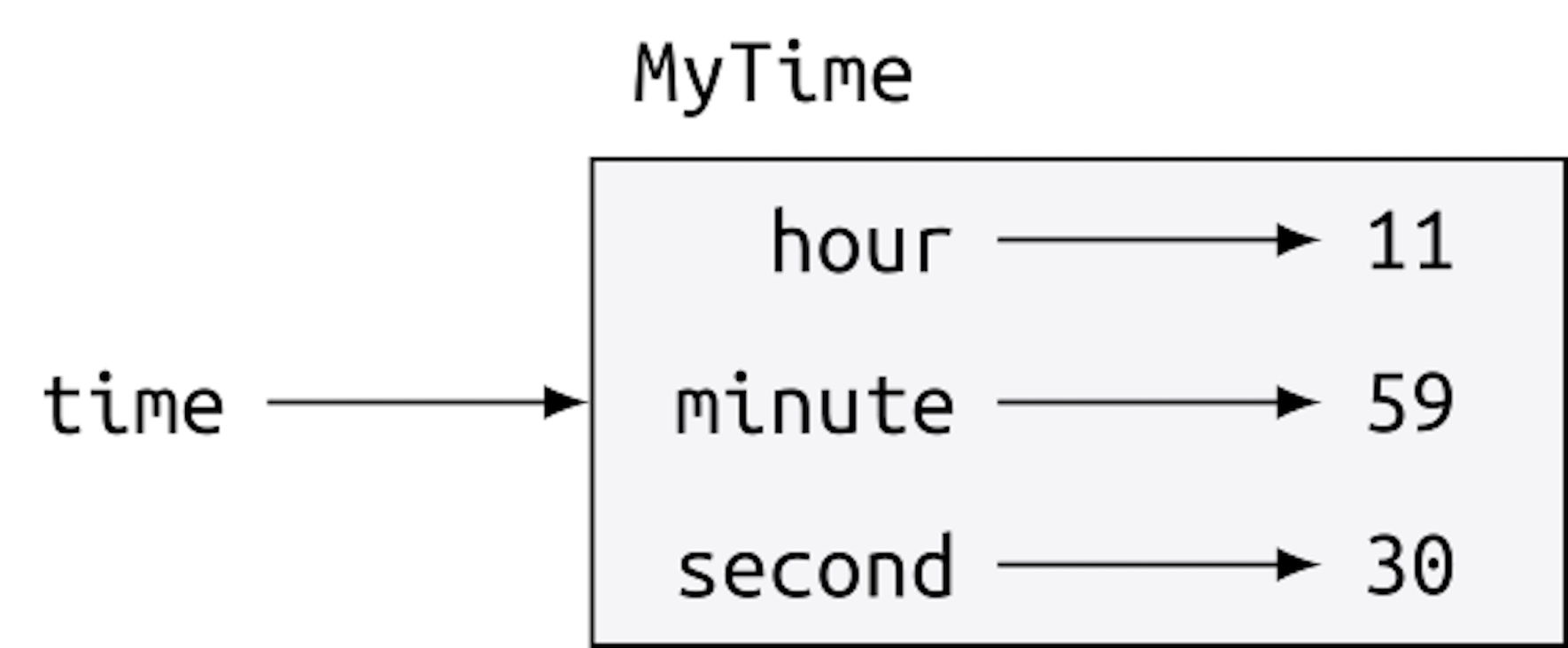Chapter 16. Structs and Functions
Now that we know how to create new composite types, the next step is to write functions that take programmer-defined objects as parameters and return them as results. In this chapter I also present the “functional programming style” and two new program development plans.
Time
As another example of a composite type, we’ll define a struct called MyTime that records the time of day. The struct definition looks like this:
"""Represents the time of day.fields: hour, minute, second"""structMyTimehourminutesecondend
The name Time is already used in Julia, so I’ve chosen this name to avoid a name clash. We can create a new MyTime object as follows:
julia>time=MyTime(11,59,30)MyTime(11, 59, 30)
The object diagram for the MyTime object looks like Figure 16-1.

Figure 16-1. Object diagram
Exercise 16-1
Write a function called printtime that takes a MyTime object and prints it in the form hour:minute:second. The @printf macro of the standard library module Printf prints an integer with the format sequence "%02d" using at least two digits, including a leading zero if necessary.
Exercise 16-2
Write a Boolean function called isafter that takes two MyTime objects, t1 and t2, and returns true if t1 follows t2 chronologically and false otherwise. Challenge: don’t use an if statement.
Pure Functions
In the next few sections, we’ll write two ...
Get Think Julia now with the O’Reilly learning platform.
O’Reilly members experience books, live events, courses curated by job role, and more from O’Reilly and nearly 200 top publishers.

